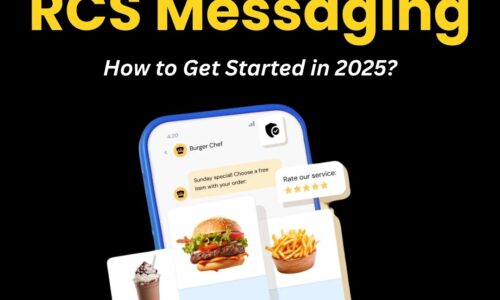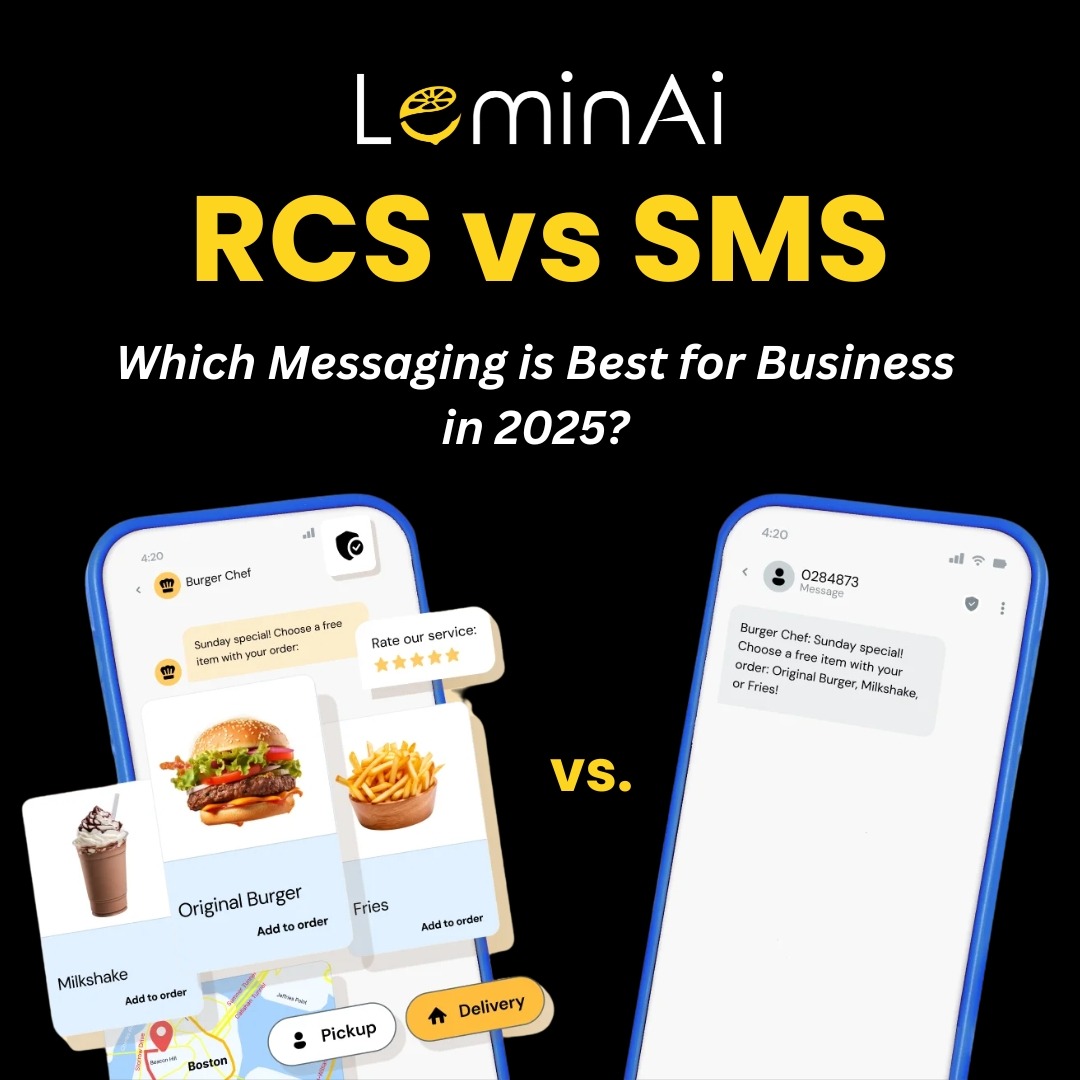
It all started with a simple “Hi, how are you?”—the brief message that kicked off the era of SMS (Short Message Service) more than three decades ago. What began as a 160-character text soon became a global communication standard, but today businesses face a new choice: RCS vs SMS. In 2025, users expect rich media, quick-replies and interactive experiences—and RCS is the evolution of messaging that answers those demands.
But messaging hasn’t stood still—and today the big debate is RCS vs SMS. In 2025, the landscape has grown far beyond simple texts. Users now expect more—from images and videos to real-time updates and interactive experiences. That’s where Rich Communication Services (RCS) comes in.
RCS business messaging takes everything people love about SMS and enhances it. Instead of just words, brands can send visuals, clickable buttons, live updates, and even product carousels—all directly in a customer’s default messaging app. It’s like the difference between a postcard and a mini-app inside your inbox.
For a long time, RCS was available only to Android users. But that’s rapidly changing. With Apple gradually introducing RCS compatibility, the technology is poised to become a true cross-platform standard. This means both Android and iOS users can now receive rich, branded, two-way messages from businesses—without needing to install any third-party apps.
So, where does this leave SMS? Is it outdated?
Not at all. SMS still plays a vital role—especially when your goal is simple, universal reach. But when it comes to customer engagement, branding, and interactivity, RCS is fast becoming the go-to channel for forward-thinking brands.
Let’s break it all down—RCS vs SMS, what each one offers, and how your business can use them to engage customers more effectively in 2025.
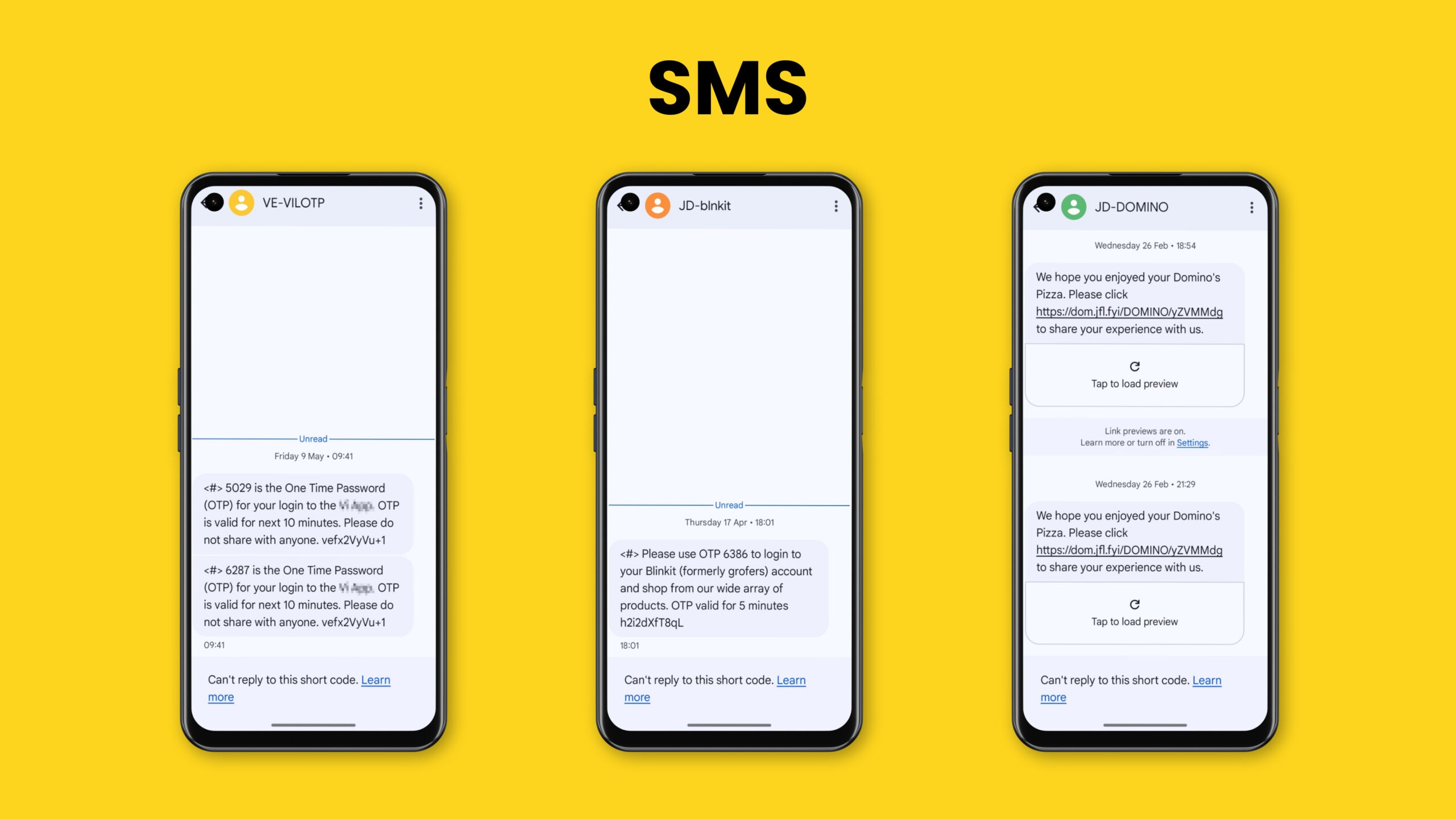
What is SMS?
SMS (Short Message Service) has been the foundation of mobile messaging for over 30 years—and it continues to hold its ground. Nearly every mobile phone in the world supports SMS, making it the most universal communication channel available today. No apps, no internet, no fancy tech—just a dependable text message that works anywhere, anytime.
That’s exactly why businesses still rely on SMS in 2025. Whether it’s sending appointment reminders, OTPs, alerts, or updates, SMS ensures your message reaches the customer, even when they’re offline or using a basic device.
In fact, 83% of consumers still say texting is their top mobile activity, surpassing even social media and email. For sheer reach and delivery reliability, SMS remains unmatched.
There’s also MMS (Multimedia Messaging Service), a slight upgrade to SMS that allows sending photos, videos, and audio files. But even with those features, MMS lacks the interactivity and visual polish offered by newer messaging platforms like RCS, WhatsApp, or Messenger.
While SMS does support basic two-way communication—like replies to messages from short or long codes—its capabilities are quite limited. There are no read receipts, no buttons, no typing indicators, and no branding options. It’s functional, but not flexible.
Still, in many situations, SMS serves as a critical fallback—especially when RCS isn’t available or supported by the user’s device or network.
In short, SMS may not be the flashiest tool in your messaging kit anymore, but it’s still a must-have for reach, reliability, and compatibility. And when paired with more modern options like RCS, it helps form a complete mobile messaging strategy.
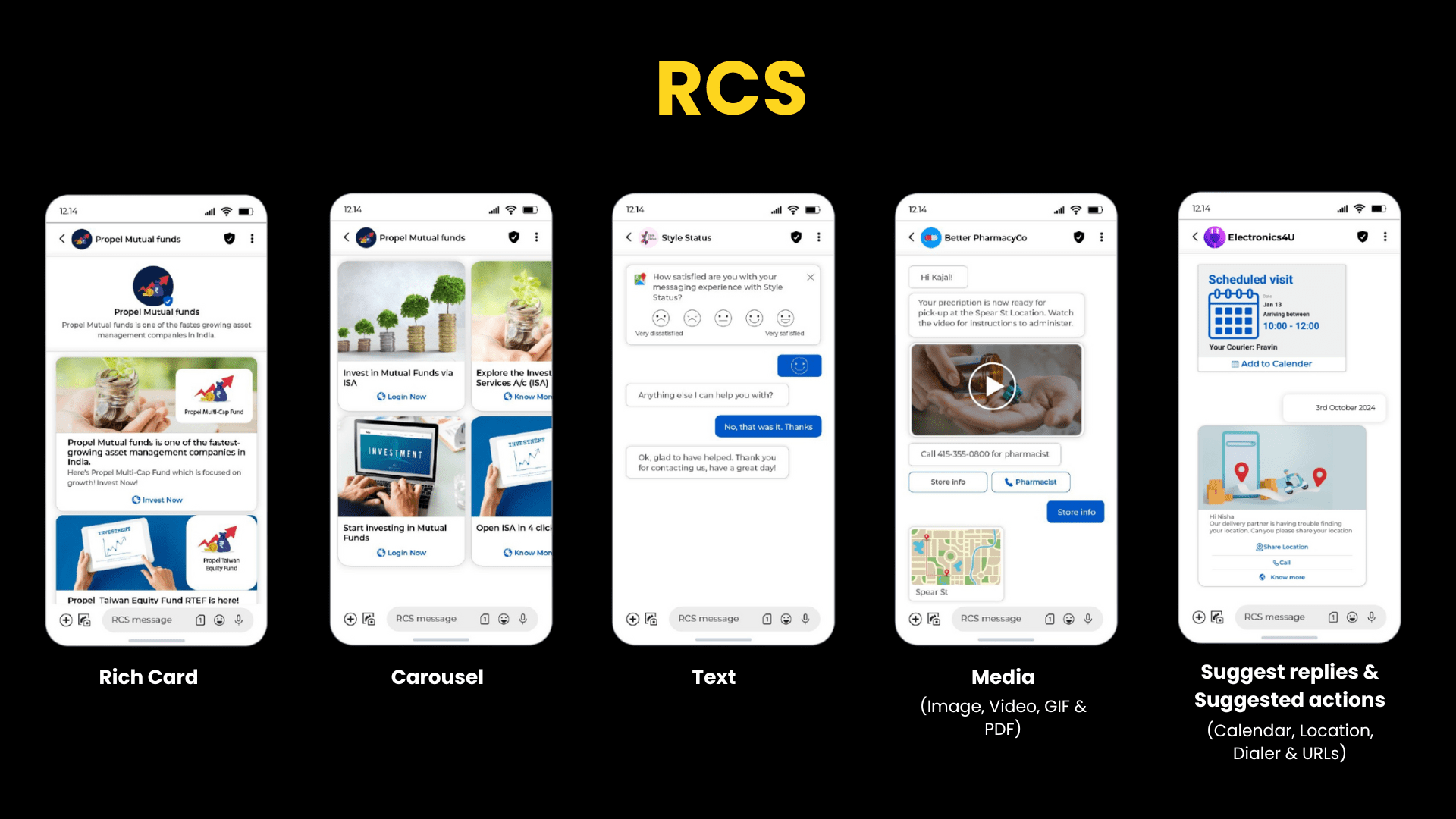
What is RCS?
RCS (Rich Communication Services) is the next-generation messaging protocol that upgrades traditional SMS with a modern, interactive experience. Think of it as bringing the best of apps like iMessage, WhatsApp, or Messenger—but directly into your phone’s default messaging app.
With RCS, users can send high-resolution images and videos, see when someone is typing, receive read receipts, tap on quick reply buttons, and even interact with carousels or forms—all within the native messaging inbox.
Unlike over-the-top (OTT) messaging apps, RCS doesn’t require downloading anything extra. It works right out of the box on supported Android phones—and now, with Apple slowly rolling out RCS support, it’s set to become a universal rich messaging standard for both platforms.
For users, RCS means conversations feel more fluid, engaging, and app-like. For businesses, RCS unlocks a new level of customer interaction—with branded messages, verified sender profiles, and interactive calls-to-action that drive real results.
And the impact is already being felt:
Over 51% of consumers in 2024 said they’re more likely to engage with an RCS message than a traditional SMS.
In simple terms, RCS is what SMS would look like if it were invented today. It’s visual, conversational, and built for the way people communicate now—making it one of the most powerful messaging tools available for forward-thinking brands.
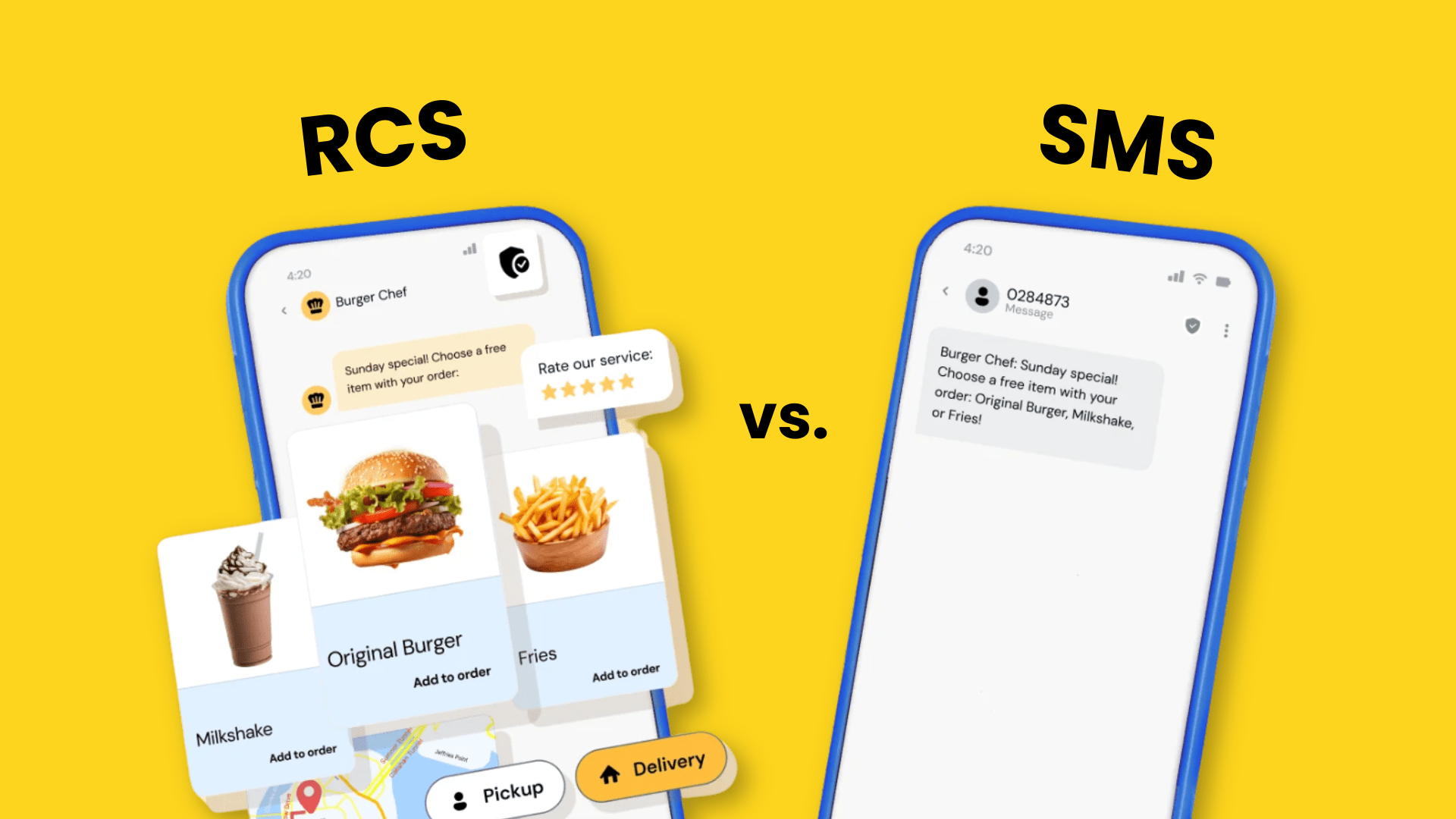
RCS vs SMS: What’s the Difference?
When it comes to business messaging in 2025, the choice between SMS and RCS isn’t just about how a message is sent—it’s about the kind of experience you want to deliver.
While SMS remains the most universally supported messaging method (working on virtually every phone, no internet required), RCS takes messaging to a whole new level with interactive, branded, and rich media experiences.
Here’s a clear comparison to help you understand how they stack up:
| Feature | RCS | SMS |
|---|---|---|
| Usability | Works on Android & iOS 18+; no third-party app needed | Works on all phones; no app required |
| Network | Requires mobile data or Wi-Fi | Uses cellular signal; no internet needed |
| Reach / Adoption | 1.5B+ Android users; growing with Apple support | 7.3B+ global mobile phone users |
| Text Limit | Up to 3,072 characters | 160 characters |
| Media Support | Images, carousels, buttons, maps, videos, audio | Plain text only (MMS allows limited media) |
| Security / Encryption | Encrypted in transit; end-to-end on Android | No encryption |
| User Experience | Branded, rich content with interactive UI | Basic plain text interface |
| Engagement | 90% read in 15 mins; longer interaction time | 90%+ open rate; shorter engagement |
| Branding | Verified sender name, logo, colors | No branding; Alpha Sender ID in few regions |
| Cost | Typically higher; may be session or event-based | Lower; per message or per segment |
| Compliance | Follows modern privacy laws; opt-in based | Strict opt-in required under TCPA, GDPR |
| Analytics | Read receipts, clicks, button usage, delivery | Only delivery status in most cases |
| Speed | Fast over data; reliable with internet access | Instant via cellular network |
| API Integration | Supports advanced API with cards, buttons; easy to integrate | Limited APIs (REST/SMPP); difficult to integrate |
| Global Availability | Expanding quickly with Android & iOS 18 | Universal compatibility across all regions |
As you can see, RCS and SMS differ widely in capabilities, security, and business use. Choosing the right one depends on your messaging goals, audience, and feature needs.
Is SMS or RCS Better for your Businesses?
The choice between SMS and RCS for the businesses depends entirely on your campaign goals and your target audience.
- SMS remains one of the most reliable and widely adopted messaging solutions, reaching almost any mobile phone on the planet—no internet needed.
- On the other hand, RCS messaging offers a richer, branded, and interactive experience, ideal for modern marketing needs.
In fact, the 2024 Customer Connections Survey revealed a growing frustration among users with generic, text-only messages. Consumers now expect:
- Two-way communication
- Fast responses
- Visual content that Result in CTA
So, what should your business choose?
Use RCS  If You Want:
If You Want:
- To send rich media like images, GIFs, carousels, maps, and videos
- Features such as read receipts, typing indicators, and longer message limits
- Branded messaging with logos, color themes, and verified sender names
- Higher engagement rates and visually-driven conversations
- AI-powered interaction or chatbot flows
Use SMS  If You Want:
If You Want:
- To ensure universal reach, including on basic or older mobile phones
- To send short, urgent, and text-only messages (e.g., OTPs, alerts)
- A fallback option when RCS isn’t supported
- A proven, cost-effective messaging method with a near-100% delivery rate
What Can SMS vs RCS Offer Your Business?
There’s no single “best” messaging channel for every business—and that’s actually a strength.
Many companies today use a hybrid strategy, leveraging both SMS and RCS to maximize reach and engagement. Here’s how:
| Use Case | SMS | RCS |
|---|---|---|
| Appointment Reminders | ✔ | ✔ (with visuals, maps) |
| Promotions/Offers | ✔ | ✔ (with buttons, rich cards) |
| Surveys & Feedback | ✔ | ✔ (interactive UI) |
| Customer Support | ✔ (basic replies) | ✔ (two-way chat with quick reply buttons) |
| Brand Awareness | ✖ | ✔ (branding, logos, themes) |
Pro Tip: Use Auto-Fallback
The smartest approach is to integrate an API that supports both SMS and RCS. This allows your system to:
- Automatically upgrade to RCS when supported
- Fallback to SMS when needed
This ensures that your message is always delivered, in the best possible format, without additional work.

